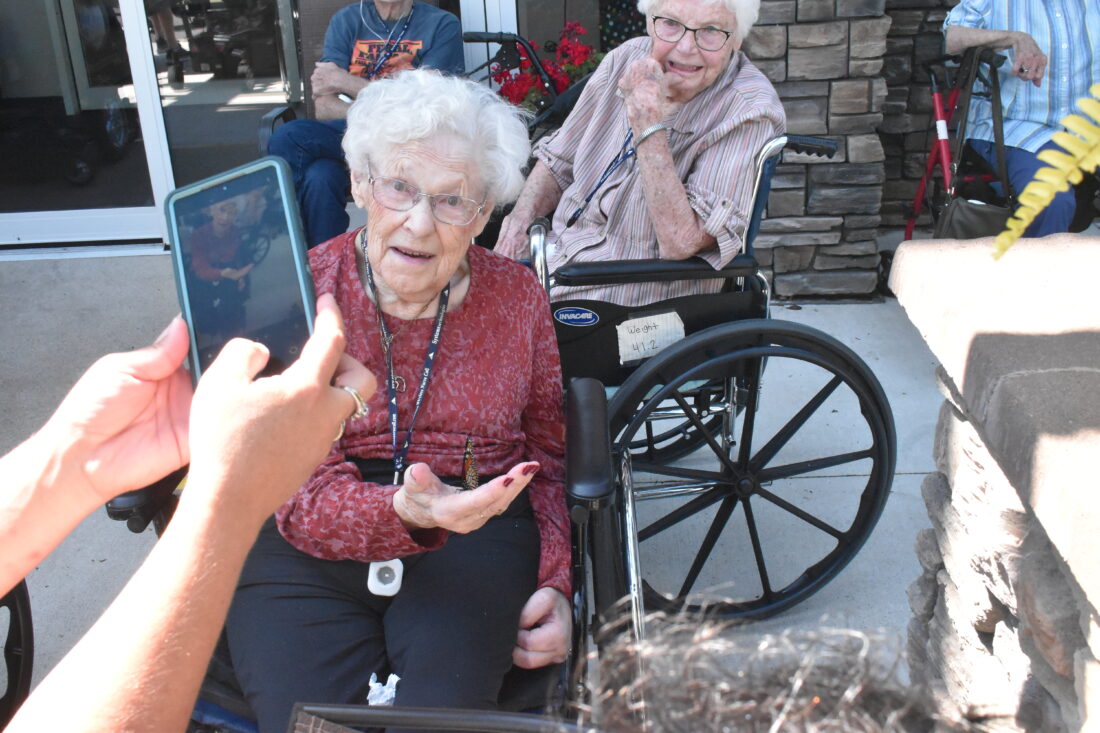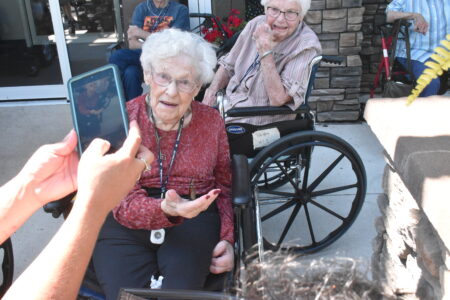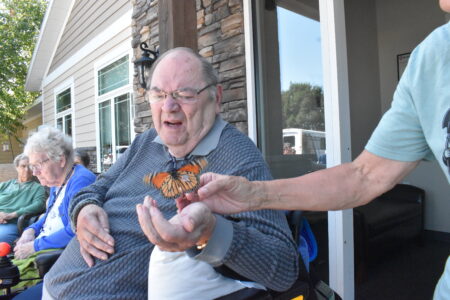Releasing the Monarchs
Nursing home residents, preschoolers enjoy interacting with migrating butterflies

Staff photo by Fritz Busch A monarch butterfly sits in Woodstone Senior Living resident Doris Hopp's hand before it flies away Thursday.
- Staff photo by Fritz Busch A monarch butterfly sits in Woodstone Senior Living resident Doris Hopp’s hand before it flies away Thursday.
- Staff photo by Fritz Busch Woodstone Senior Living resident Emery Haus releases a monarch butterfly Thursday.
Steinberg and a couple of her nature-loving friends told residents about monarch butterflies, tagged their wings and released them from several resident’s hands.
“Smaller than a pinhead, monarch butterfly eggs were viewed on top of green leaves. One to seven days after the monarch leaves its eggs, tiny caterpillars eat their way out of the egg, eat it, then eat milkweed,” said Steinberg.
About a week later, caterpillars eat milkweed until they’re an inch or two long and form a green j-shaped chrysalis with gold marks on it.
“It takes about a month for a tiny monarch butterfly egg to become an adult butterfly. Males have two black dots on their lower wing. Females has no black dots on the lower wing,” she said.

Staff photo by Fritz Busch Woodstone Senior Living resident Emery Haus releases a monarch butterfly Thursday.
Steinberg said she caught many monarch butterflies in oak trees, near the Fort Ridgely State Park amphitheater.
“Last year, there were much fewer butterflies. It was a very dry year with less flowers, which they need to feed on for nec,” she said.
For the past few years, Steinberg has brought butterflies, talked about them and released them with various groups including nursing homes and pre-schoolers.
“The residents just love it. We tag butterflies with a special code from Monarchwatch.org, determine if they’re male or female, wild or reared, and release them. I got most of these butterflies from the (North Broadway) New Ulm Pollinator Park and at my home. I raise butterflies in my garden,” Steinberg said.
The butterfly release made some residents think of earlier encounters with them.

“I remember seeing butterflies that were very thick on a tree on our farm near Swan Lake,” said Woodstone resident Doris Hopp.
“I remember seeing many of them on trees near Lake Francis near Mankato,” said Emery Haus.
Monarchs know when it’s time to migrate south for the winter based on environmental signals indicating the seasons are changing, according to the World Wildlife Fund.
Guided by the son’s orbit, monarch butterflies stay on track due to an internal biological compass that functions based on movements of the sun.







